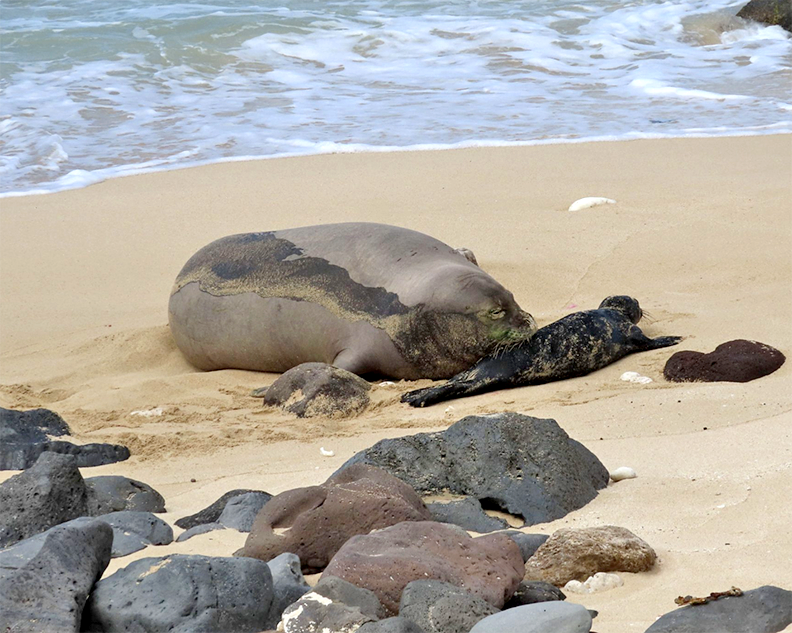By Jan TenBruggencate
The sense of conservation is deep in Hawai‘i, and dates to the earliest days of human activity.
There is a respect for biodiversity and the connection between people, plants, animals and the land.
This doesn’t mean there were no destructive acts in land use policies of early Hawai‘i. Native forested valleys were destroyed to create dense networks of taro paddies. There are references to using fire to promote the growth of pili grass for house thatching. Coastal reefs were walled in by fishponds.
But literature suggests that the sense of interdependence was a key part of the early culture of the Islands. The Hawaiian creation chant, Kumulipo, contains numerous references to the interdependence of different forms of life.
In Queen Liliu‘okalani’s Kumulipo translation, she writes of the fruitful relationship between humans and water, soil and vegetation: “A tendril strengthened by water and grew, a being, produced by earth and spread, made deafening by the swiftness of Time.”
The thought is repeated through the Kumulipo in Liliu‘okalani’s translation: “Plant the Haloa, the leaves will grow tall.”
“The wonder of the land,” Liliu‘okalani writes. “Yes! Of the land.”
Martha Warren Beckwith’s 1951 translation of the chant demonstrates the importance of responsibility or kuleana between species.
It talks of the grass of the land, manienie-‘aki‘aki, being the protector of the seagrass, and of a variety of taro being responsible for the care of a variety of edible seaweed, limu manauea. The haunting chant lists dozens of these connections between land species and marine species.
It recognizes the importance of soil and fresh water in agriculture, comparing it to the importance of salt water to marine life. Soil and fresh water are the food of the plant, Kumulipo says.
And it recognizes the role of humans in this relationship, speaking of using gourds of water to irrigate plants and help them flourish.
Another link to conservation is the personal connection between species, including humans. There is a tradition, repeated recently in political discussions about the breeding of new varieties of taro, that taro shares a common ancestor with humans.
Haloa in legend was Wakea’s stillborn first child, from whose buried body grew the first taro plant. The taro later fed humans, who were descended in mythology from the next offspring of Wakea, the ancestor of all people.
The association of plants with Hawaiian deities is recounted in “Native Planters in Old Hawai‘i,” by E.S. Craighill and Elizabeth Green Handy.
The god Kane is associated with taro, sugar cane and bamboo. Kanaloa to banana. Coconut and breadfruit to Ku. Sweet potato and gourds to Lono, god of rain and agriculture.
So there is a certain dynamic tension in the relationship between humans and the rest of the planet. Agriculture is about planting and growing and caretaking. Conservation is about protecting things — in some cases, from agriculture.
Both celebrate life, but differently. Today as in ancient times, how they are balanced defines how successfully we manage the inherent conflict.
- Jan TenBruggencate is a Kaua‘i based writer and communications consultant.
Discover more from ForKauaiOnline
Subscribe to get the latest posts sent to your email.






Leave a Reply